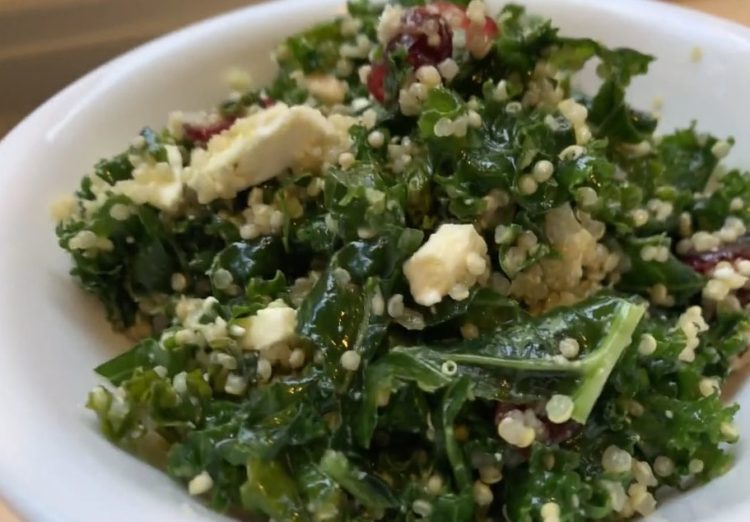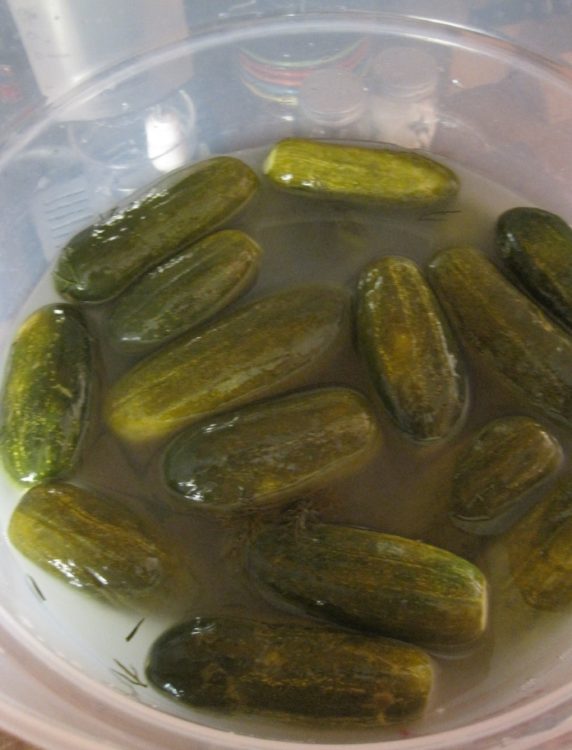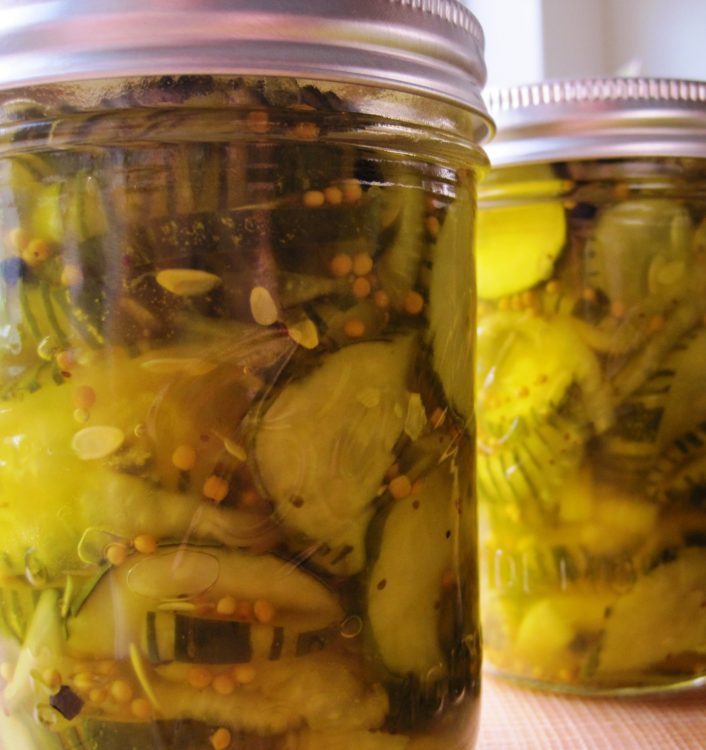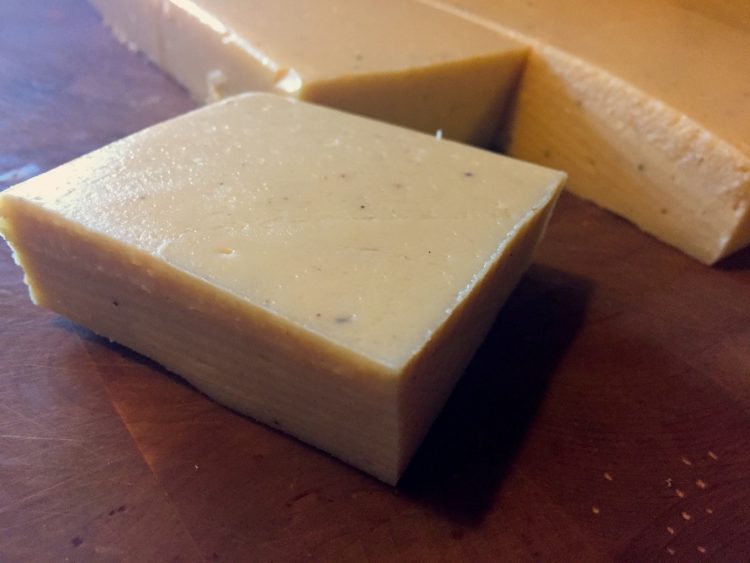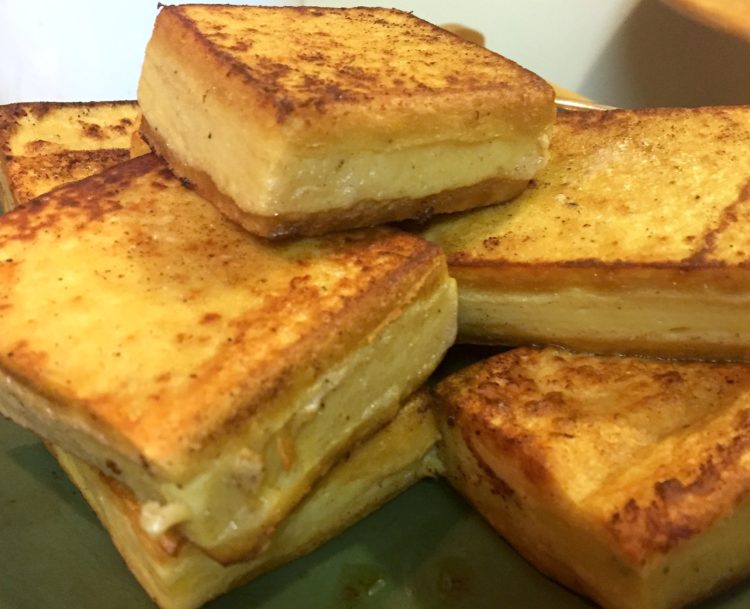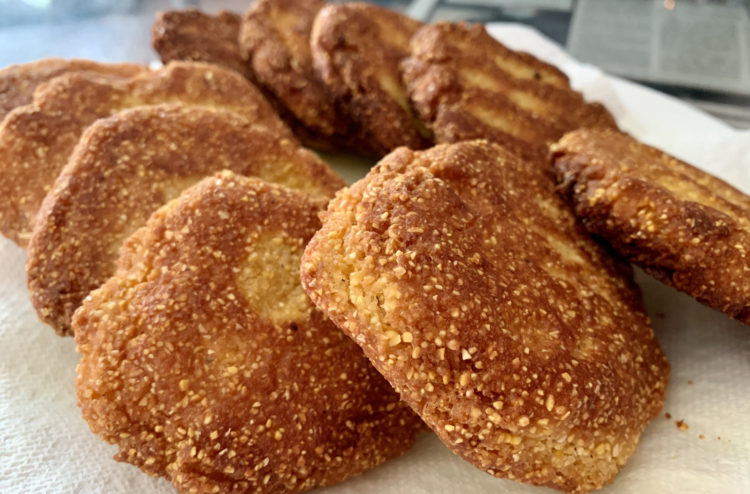
Just a quick recipe today because friends have been asking for my hot water cornbread recipe.
Hot water cornbread batter is made with boiling water, which cooks the cornmeal partially. Then patties are formed and they are shallow-fried. You wet your hands in a bowl of water before you form the patties, which should not be too thick, else they won’t get done in the middle. Southern cooks swear by the need for a bit of water on the outside to get that signature crispness. I don’t question that.
I make mine somewhere in the vicinity of a half-inch thick.
They go from your hands right into the sizzling (neutral and high-smokepoint) fat of your choice. When the pan is full (though don’t overcrowd) fry them at a sizzle for a bit but then turn the flame down so they fry slowly. If the flame is high the whole time they’ll burn on the outside and won’t cook on the inside.
You can make these with nothing more than cornmeal, salt and baking powder, but read on.
Whatever else you add is up to you. Flour is common. Mine also include a few other things. Cornstarch, rice flour, melted butter and Tony Chachere’s Creole seasoning.
They come out crisp, crisp, crisp. And they remain pretty crisp as leftovers.
Mine are also a bit chewy. Because of the flour. Which is scalded by the boiling water, creating a chemical reaction known as starch gelatinization. This works very well with the coarse cornmeal I use, which would otherwise result in a grainy final product.
You can use any Creole/Cajun seasoning you like. Slap Ya Mama, Paul Prudhomme. I like Tony Chachere’s, though I get the low-salt version, which is still plenty salty. Adjust the salt based on how much seasoning you use.
When you fry them use a cast iron skillet or some other heavy-gauge frypan. It is much easier to control the cooking process.
These are great with some Crystal hot sauce. Or the Nobu-inspired dip I’ve been making for years. Mayo, chili oil and white pepper whisked together.
Great with eggs, country-style gravy. You name it.
- 2 cups coarse cornmeal
- ⅓ cup AP flour
- 2 tablespoons rice flour
- 2 tablespoons cornstarch
- 2 tablespoons baking powder
- 1-1/2 teaspoons Creole seasoning (or more, but not too much)
- 1-1/2 - 2 teaspoons Kosher salt (more if you don't use the Creole seasoning)
- ½ teaspoon black pepper (omit if using Creole seasoning)
- ½ stick melted butter
- Kettle of boiling water
- Vegetable oil--enough to shallow-fry. About 1-1/4 cups, give or take. Sunflower, safflower, grapeseed or even the dreaded Canola, but not olive. And read the post!
- READ THE TEXT IN THE POST BEFORE YOU DO ANYTHING!
- Whisk all dry ingredients together in glass bowl.
- Add melted butter.
- Add boiling water about a cup at a time, mixing well, until you have the texture of damp Play-Doh. When you think you have it let it sit for a couple of minutes to fully hydrate. Only then will you know if you have enough water.
- To your skillet add a good amount of vegetable oil. Add enough so that your patties are ¾ covered. Eyeball your situation. Your pan is not the same size as my pan.
- Bring oil to a shimmer. It's got to be hot enough but not too hot!
- While you wait for the oil you can set up your batter bowl and a bowl of water. You will form either round or oblong patties by dipping your hands in the water, then shaking them off, then taking a scoop of dough and taking care of business. You need about 1/12 of the dough for each patty. Make them about ½-inch thick. The patties should not be dripping wet. Just a bit of water patted onto each side.
- When the oil is ready start forming patties and add them directly to the skillet. Carefully. They will spatter.
- When you have you pan full but not too full, allow them to fry on medium flame for a minute or so, then TURN DOWN THE FLAME TO LOW.
- At some point gently shake the pan to make sure you have no stickage.
- When golden brown carefully turn over.
- You want a good 5 minutes on each side on low flame. When you turn them over you should jack up the flame for a minute and then turn it down again.
- When done transfer to a platter lined with paper towels.
- Devour.

